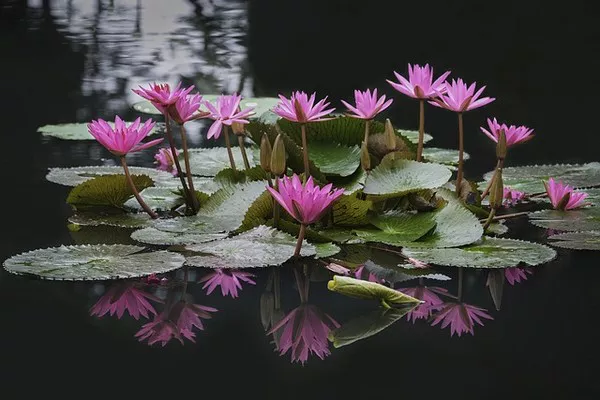The lotus flower, revered in many cultures for its beauty and symbolism, holds a special place in human hearts. With its exquisite appearance and deep cultural significance, the lotus flower has been a subject of admiration and inspiration for centuries. This aquatic perennial plant is not only aesthetically pleasing but also carries rich cultural and spiritual symbolism in various parts of the world.
Lotus flowers are commonly found in ponds, lakes, and marshes, and they come in a variety of colors, including white, pink, red, and blue. Beyond their ornamental value, lotus flowers have also been used for culinary and medicinal purposes in some cultures. However, regardless of the purpose, preserving the beauty of lotus flowers is essential, and one effective way to achieve this is through proper drying techniques.
Factors Affecting the Drying Effect of Lotus Flowers
Achieving optimal results when drying lotus flowers requires careful consideration of several factors that can influence the drying process. Understanding these factors is crucial for obtaining the best possible outcome. Here are some key factors to consider:
1. Environmental Conditions: The environment in which lotus flowers are dried plays a significant role in the process. Factors such as temperature, humidity, and airflow can affect the drying rate and quality of the flowers. Ideally, lotus flowers should be dried in a well-ventilated area with moderate temperature and low humidity to prevent mold growth and ensure even drying.
2. Harvesting Stage: The stage at which lotus flowers are harvested can impact their drying quality. Flowers that are harvested at the peak of their bloom are likely to retain their color and shape better during the drying process compared to flowers that are past their prime.
3. Preparation Method: Proper preparation of lotus flowers before drying is essential for achieving desirable results. This may include removing excess water from the flowers, trimming the stems to the desired length, and removing any damaged or discolored petals.
4. Drying Technique: The method chosen for drying lotus flowers can greatly influence the final outcome. Different techniques, such as air drying, desiccant drying, and pressing, offer varying results in terms of appearance and texture.
Methods of Drying Lotus Flowers
Several methods can be employed to dry lotus flowers effectively, each with its own advantages and considerations. Here are some common methods used for drying lotus flowers:
1. Air Drying: Air drying is perhaps the simplest and most traditional method for drying lotus flowers. To air dry lotus flowers, gather them in small bunches and hang them upside down in a well-ventilated area away from direct sunlight. Allow the flowers to dry naturally for several days until they feel crisp to the touch. Air drying preserves the natural color and shape of the flowers and is ideal for decorative purposes.
2. Desiccant Drying: Desiccant drying involves using a desiccant, such as silica gel or sand, to absorb moisture from the lotus flowers. Place the flowers in a container filled with desiccant, making sure they are not touching each other. Cover the container and leave it undisturbed for several days until the flowers are completely dry. Desiccant drying is faster than air drying and results in evenly dried flowers, making it suitable for preserving flowers for long-term use.
3. Pressing: Pressing is a method commonly used to preserve the delicate beauty of lotus flowers for artistic purposes. To press lotus flowers, carefully place them between layers of absorbent paper, such as blotting paper or parchment paper. Place heavy books or weights on top of the flowers to flatten them evenly. Leave the flowers pressed for several weeks until they are completely dry and flat. Pressed lotus flowers can be used for various art and craft projects, such as making greeting cards or framed displays.
Tips for Drying Lotus Flowers
Achieving optimal results when drying lotus flowers requires attention to detail and proper technique. Here are some helpful tips to ensure successful drying:
1. Choose Fresh Flowers: Select fresh, undamaged lotus flowers for drying to achieve the best results. Avoid flowers that show signs of wilting or discoloration, as they may not dry well.
2. Handle with Care: Handle lotus flowers gently to avoid damaging the petals or stems. Use sharp scissors or pruning shears to trim the stems to the desired length, taking care not to crush or bruise the flowers.
3. Monitor Environmental Conditions: Keep an eye on the temperature and humidity levels in the drying area to ensure optimal drying conditions. Too much moisture in the air can lead to mold growth, while high temperatures can cause the flowers to become brittle.
4. Patience is Key: Drying lotus flowers is a gradual process that requires patience. Avoid rushing the drying process, as this can result in uneven drying and compromised quality. Allow the flowers to dry naturally at their own pace for the best results.
5. Inspect Regularly: Check the progress of the drying process regularly to ensure that the flowers are drying evenly and without any signs of mold or decay. Remove any flowers that show signs of spoilage to prevent contamination of the remaining flowers.
Conclusion
Drying lotus flowers is a rewarding process that allows you to preserve their beauty and symbolism for various purposes. By understanding the factors that affect the drying process and employing suitable drying techniques, you can achieve optimal results and enjoy the timeless elegance of lotus flowers for years to come. Whether you’re using them for decorative purposes, culinary endeavors, or artistic pursuits, properly dried lotus flowers are sure to captivate and inspire all who behold them.


